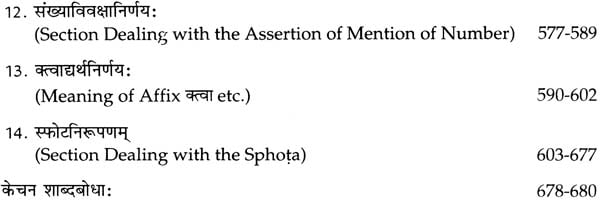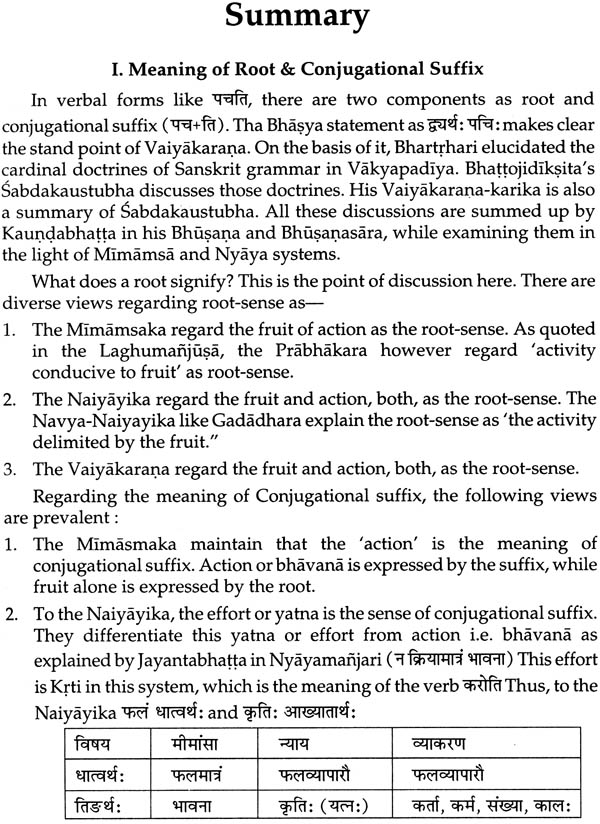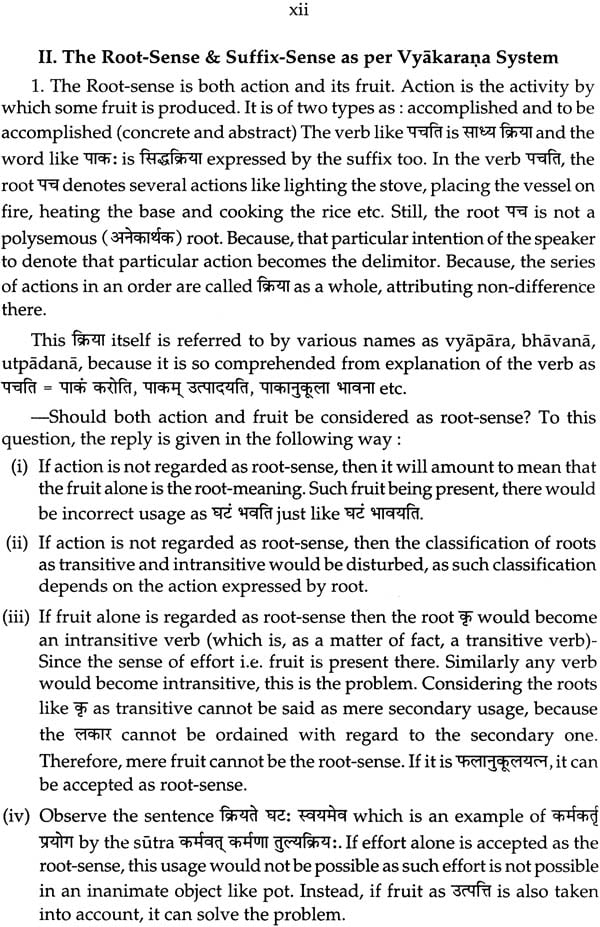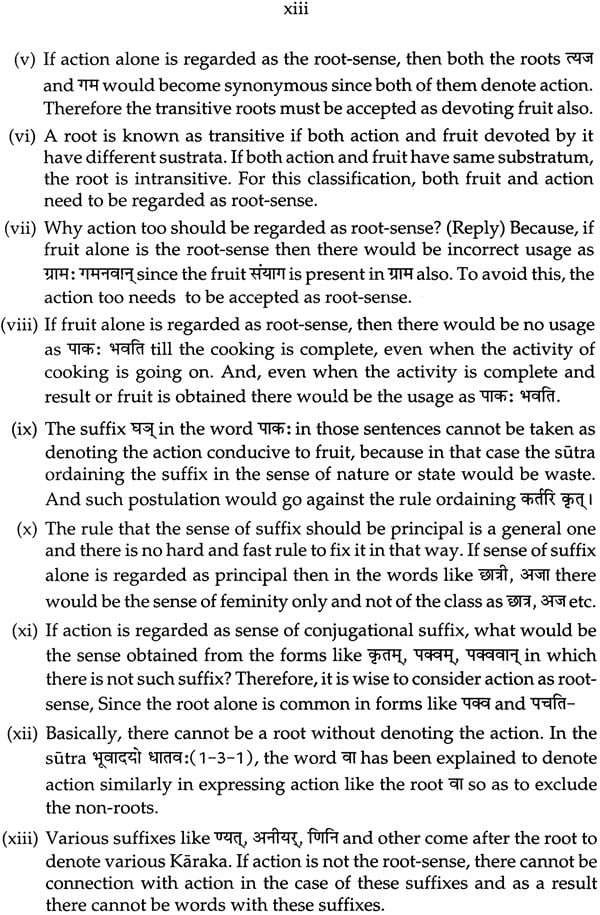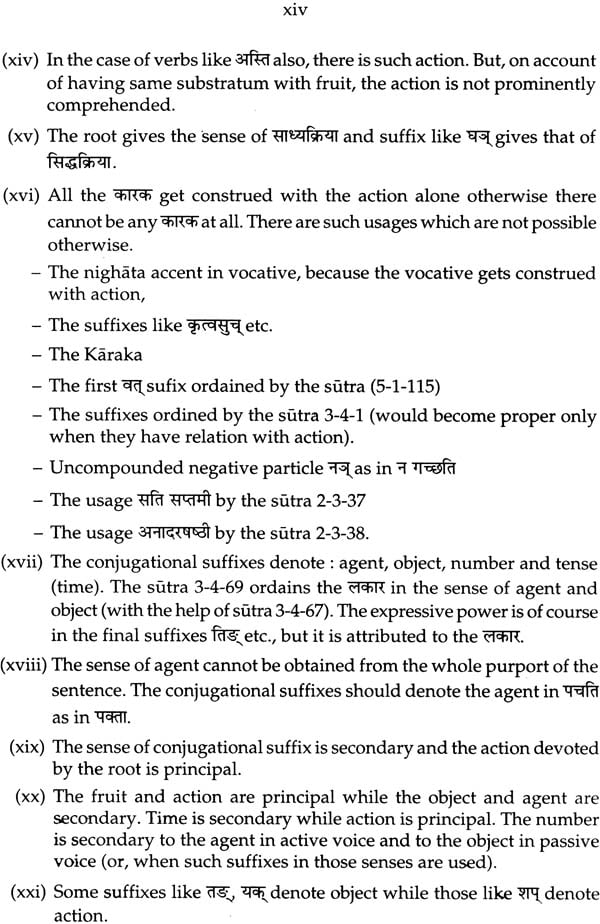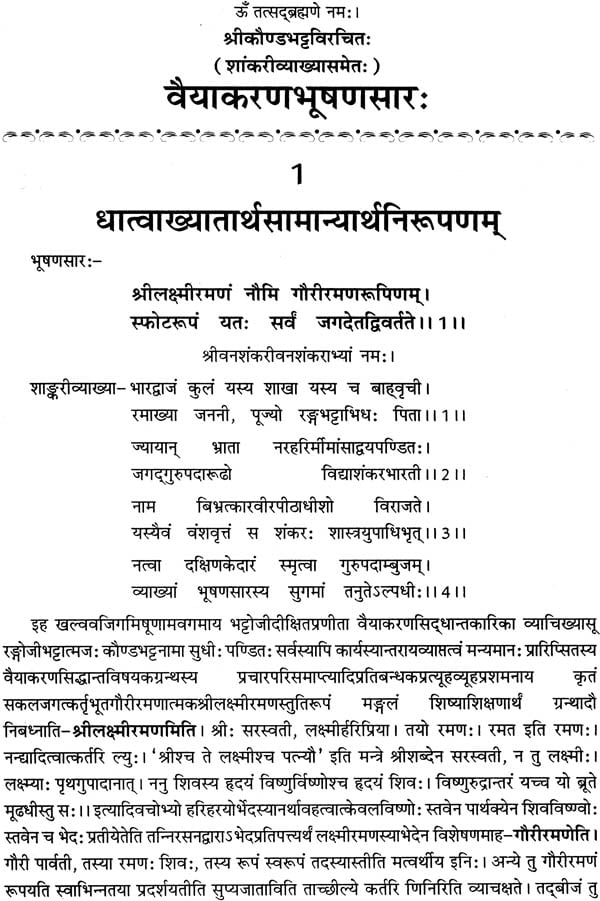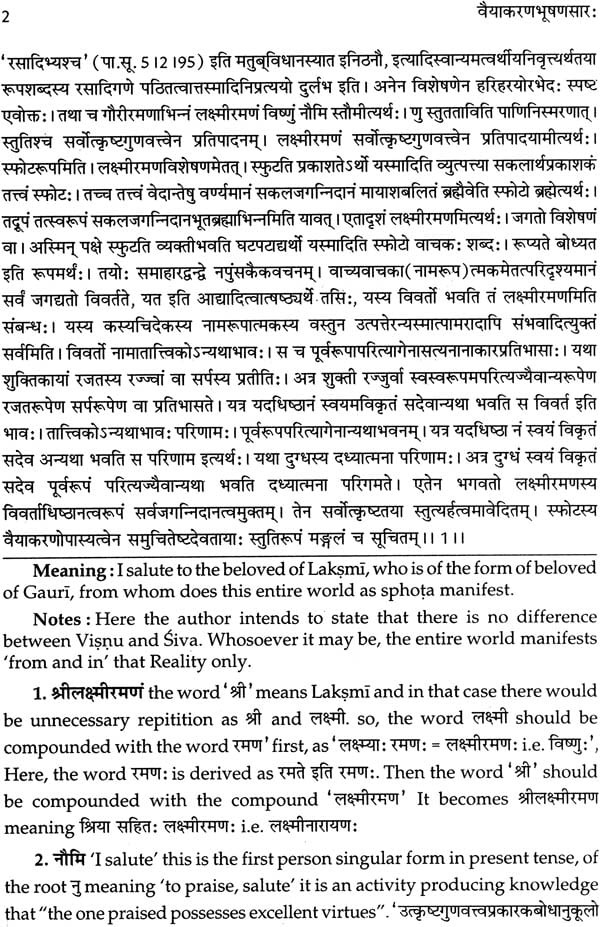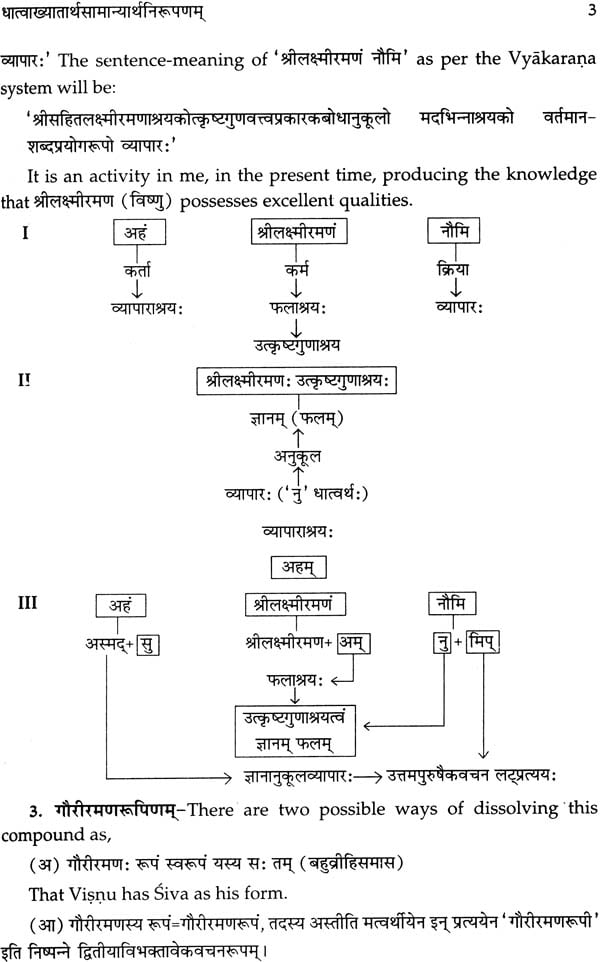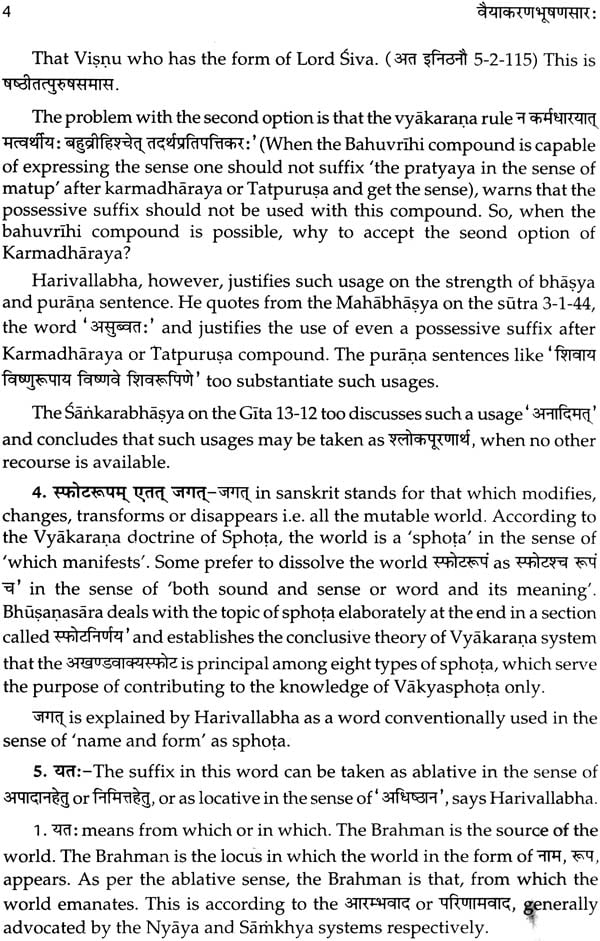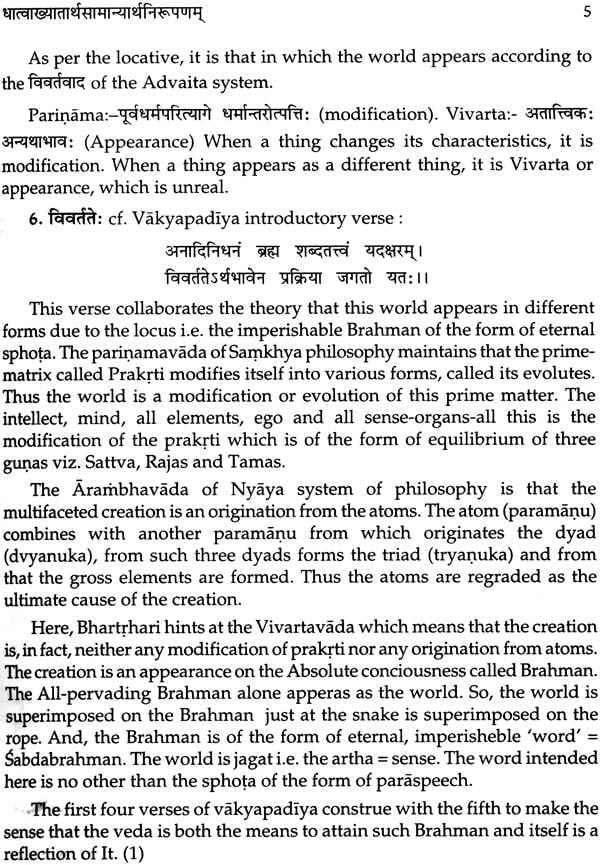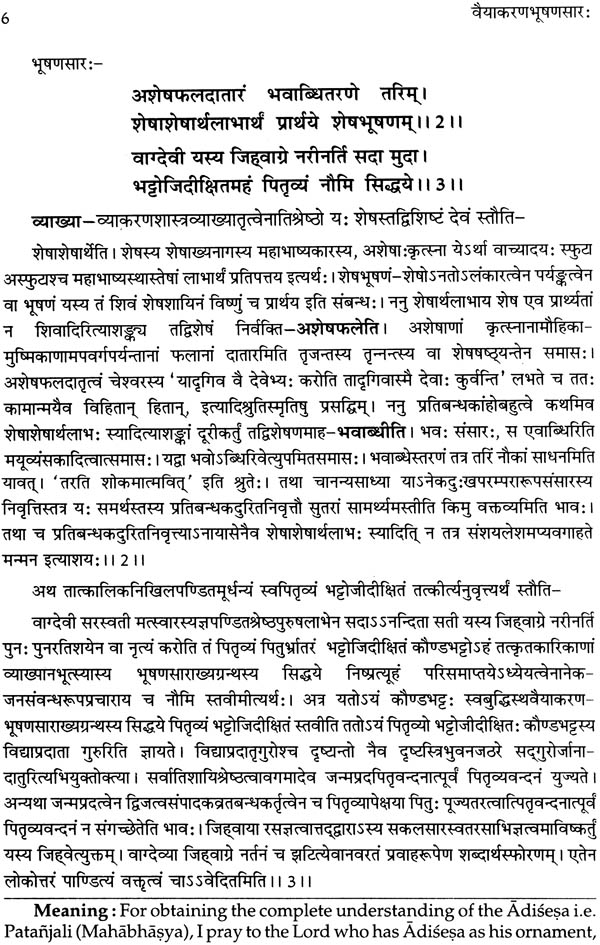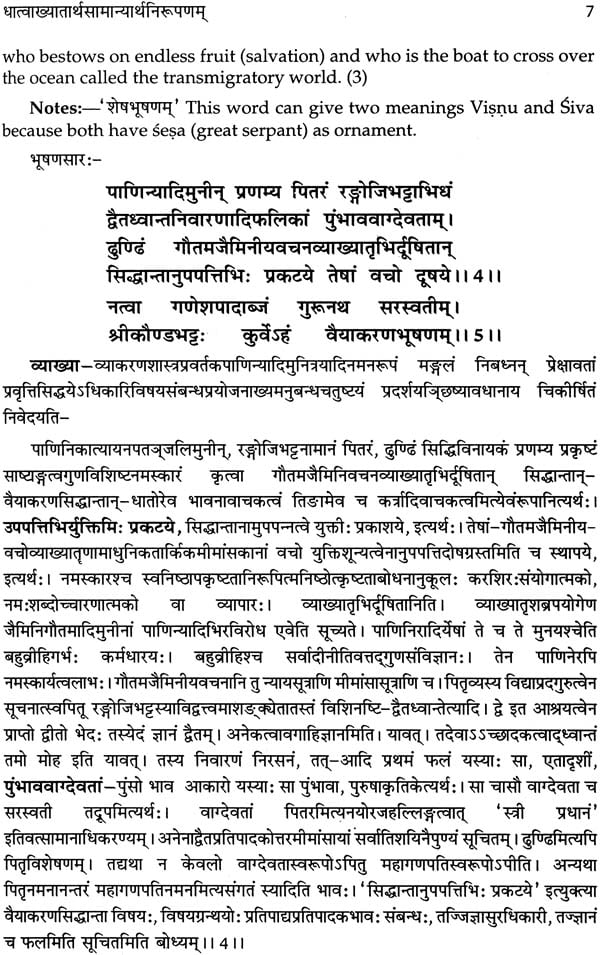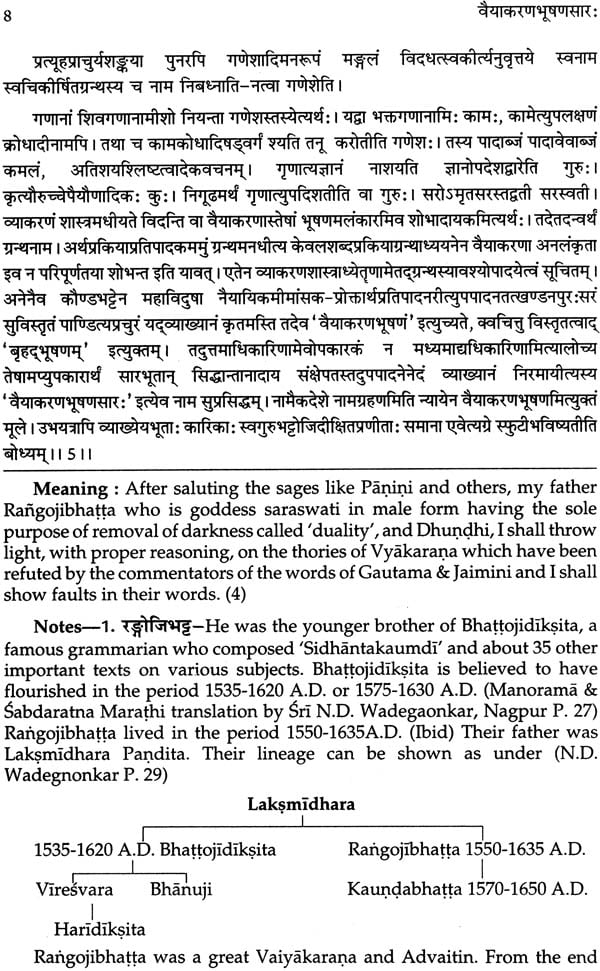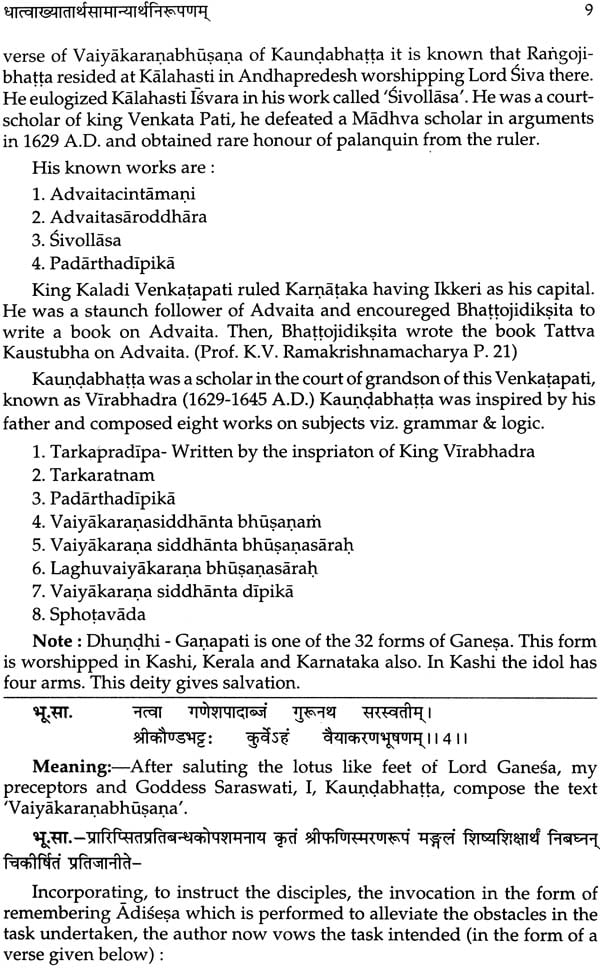
Vaiyakarana Bhusana Sara (Philosophy of Sanskrit Grammar)
Book Specification
| Item Code: | NAK758 |
| Author: | Madhusudan Penna |
| Publisher: | NEW BHARATIYA BOOK CORPORATION |
| Language: | Sanskrit Text With English Translation |
| Edition: | 2013 |
| ISBN: | 9788183152136 |
| Pages: | 711 |
| Cover: | Hardcover |
| Other Details | 9.5 inch X 7.5 inch |
| Weight | 1.40 kg |
Book Description
Bhushanasara or Vaiyakarana-bhushanasara is a popular work of Kaundabhatta on many important matters of Sanskrit Language, popularly ranked next to Bhartrhari's Vakyapadiya. It was written in the 17th Century A.D. as a commentary on the Bhushana text of the same author. Bhushana was itself a commentary on the Vaiyakarana karika of Bhattojidikshita.The author Kaundabhatta belonged to the family of great doyen of Sanskrit Grammar, Bhattojidikshita. He was the latter's nephew. Even today the Bhushanasara remains unchallenged in the Sanskrit Shastra Circles being regularly studied throughout India.
The relevant matters of Sanskrit Language like the meaning of root, tenses and moods, suffixes, cases, negative particle, number, the radical sound Sphota etc., are discussed in this text in the light of Mahabhashya and Vakyapadiya. The views of other thinkers are examined by the author critically before arriving at any conclusion. A thorough study of this text stands a novice in good stead by offering him a fresh view of the shastra matters. Such student of grammar can easily grasp the nuances of other systems like Nyaya, Mimamsa and Vedanta especially in the matters of Language and grammar.
The present text is complete and simple rendering of the Bhushanasara in English with necessary notes to make the text available to interested persons in complete form. An attempt is made here to make the Bhushanasara text available to many seekers of knowledge who desire to understand the text through a language other than Sanskrit. Keeping in view the necessity of the age, fervour and efficacy of visual presentation, the subject is explained with the help of tables. The translation is made as close as possible to the original text on the basis of available commentaries like Darpana and Shankari.
The present translation is supplemented with notes where ever necessary. The main feature of this edition is that the text is printed along with the Shankari commentary to facilitate easy reference to the Sanskrit students for comparison. Shankari is of course a scholarly commentary elucidating many abstruse theories of Sanskrit Grammar and other systems. Scholarly discussions frequently encountered in texts like Shekhara and Manjusha texts of Nageshbhatta and others are, however, deliberately avoided here with the fear that such discussions may divert the student's attention from main subject. As a matter of fact, any student who understands this Bhushanasara clearly can himself make a way into the scholastic texts of Sanskrit Grammar further.
The great tree of Sanskrit Grammar, the seeds of which were sown by the historical giant grammarian Panini in about the 5th century B.C., was safeguarded, nourished and made eternal by stalwarts like Patanjali, Bhartrhari, Bhattoji Diksita, Nagojibhatta and others. The vast span of time has, throughout centuries, produced many devoted souls who had evolved a science and philosophy of grammar and enriched the tradition of Sanskrit Grammar.
As aptly glorified by many a scholars, both Indian and Foreign, Sage Panini is undoubtedly a wonder in the history of linguistic and grammatical studies who was far ahead of what the very modern scholars of all ages could imagine in the field of grammar. He has been a source of inspiration for many and admiration for all. The mathematical accuracy with which he has evolved a system of grammar has fascinated and wondered all thinking souls whoever turned to his magnum opus Astadhyayi, a grammar book of Sanskrit language in eight chapters. He is believed to have belonged to the North Western province of India of those days during the 5th or 6th century. He was educated at the university of Taksasila, He made an authoritative description of Sanskrit language both Vedic and Classical, in all 3981 sutras (formulas) in Astadhyahi.
Katyayana or Vararuchi, believed to be a native of South India studied the Paninian Grammar together with many other systems existing during that period and composed vartika as glosses to the original sutra for purposes of correction, completion or explanation. He made an indepth study of the sutra in the light of colloquial form of Sanskrit language too and criticized the Paninian rules at places.
Patanjali of the second century B.C., is the most revered Grammarian of all times whose sentences have always been quoted by Sanskrit grammarians as final words in ascertaining final theories in Sanskrit language and grammar of his time and produced the magnificent work 'Mahabhasyam' on the sutras of Panini. It is not exactly known as to how many sutras he had chosen to explain but the extant Mahabhasya text is available on 1228 of the 3981 sutras. The bhasya is very scholarly yet very simple in style discussing very pertinent matters of Sanskrit grammar. In it, Patanjali has approved many vartiks, rejected few and supplemented some other. The Mahabhasya is divided into eighty five sections called ahnika consisting of subject matter of one day's study each.
Bhartrhari, of the fifth century A.D., revived the tradition of Mahabhasya by his colossal Vakyapadiya giving a thorough exposition of the philosophy of grammar drawing final theories on the basis of Mahabhasya. The renowned philosophers like Dinnaga, Nagesa and others too have quoted widely from his work. His Sabdabrahma and Sattadvaitavada have given Sanskrit grammar a truly philosophical nature paving way for new studies in Sanskrit grammar.
Bhattojidiksita, of the seventeenth century, was a Telugu Brahmin belonging to the Vijayanagaram region of that period. His forefathers migrated to Tamilnadu and Battoji himself studied many shastra at Varanasi and created new generation of Sanskrit grammarians with his scholarly works like Siddhantakaumudi, Praudhamanorama, Vaiyakarana- siddhantakarika summing up and discussing very important matters of grammar on the lines of Mahabhasya and Vakyapadiya. His Siddhantakaumudi is the most reputed work on grammar, being studied everywhere for authentic knowledge of Sanskrit language structure. His grandson Haridiksita wrote a commentary called Sabdaratna on Bhattoji's Siddhantakaumudi. Bhattoji's brother Rangoji was also a good scholar of Vedanta, Vyakarana, Mimamsa and other sastras.
Kaundabhatta, who lived in the 17th century, was son of Ranjojibhatta and nephew of Bhattojidiksita. He wrote Vaiyakaranabhusana and Bhusanasara on the 72 Vaiyakarana-siddhanta-karika of Bhattojidiksita. As Prof. K.V. Abhyankar remarked, the Bhusanasara ranks next to the Vakyapadiya of Bhartrhari.
Nagesabhatta, of the eighteenth century A.D., is the most reputed scholar of Sanskrit Grammar who is traditionally believed to have studied the Mahabhasya 22 times before composing his monumental works Manjusa and Sekhara. He was a pupil of Haridiksita. He hailed from Tasgaon in Satara district of Western Maharashtra but pursued studies in Benares and attained reputation as authentic Sanskrit Grammarian throughout India. His commentary called Uddyota on Kaiyata's Pradipa on Mahabhasya is widely studied text.
Vaidyanatha Payagunde, of the eighteenth century, was a bright student of Nagesabhatta who wrote commentaries on Nagesabhatta's works. His Gada commentary on Paribhasendusekhara, Chidasthimala on Laghusabdandusekhara and Chaye on Udyota are very famous among grammanians.
Devoted scholars of such fervour, intelligence and stature strengthened Grammatical studies in India and the torch of Sanskrit grammar was further held by reputed scholars like Pt. Charudevashastry, Pt. Peri Suryanarayana Shastry (Andhra), Shri Yudhishthira Mimamsak, Mahamahopadhyaya S.D. Joshi, Prof. George Cardona and others. Modern scholars like Prof. Saroja Bhate, Prof. Srinivasa Shastry, Prof. K.V. Ramakrishnamacharyulu, Prof. Harinarayana Tiwari, Prof. Malhar Kulkarni and others have strengthened Sanskrit Studies further, becoming a source of inspiration to many Sanskrit students. Thus, the ambrosia of Sanskrit Grammar, churned by Sage Panini by his intellect from the ocean like language, has been making many lives immortal on this planet.

